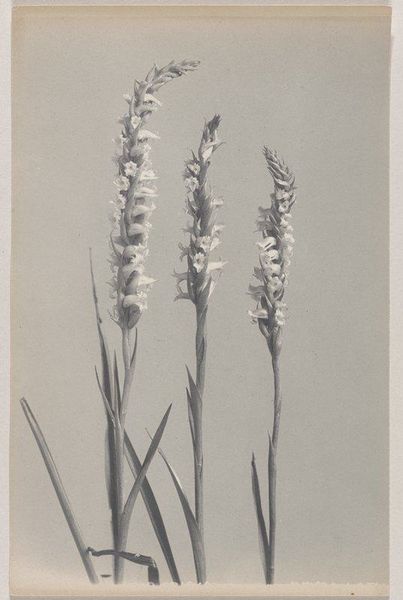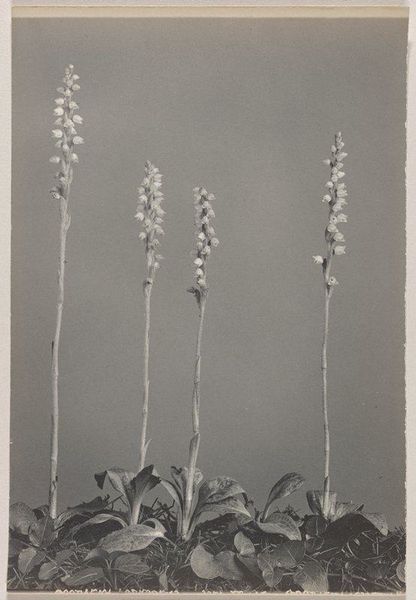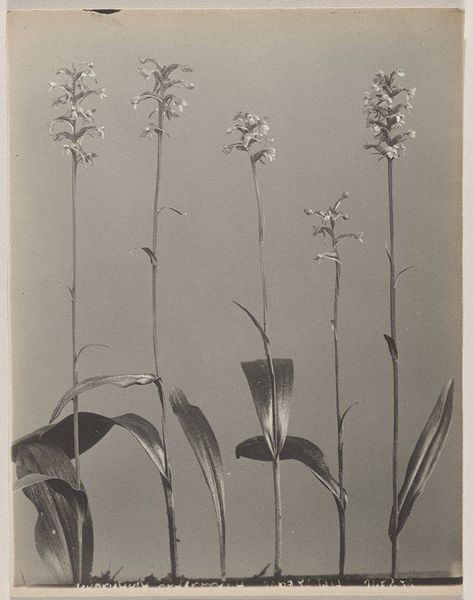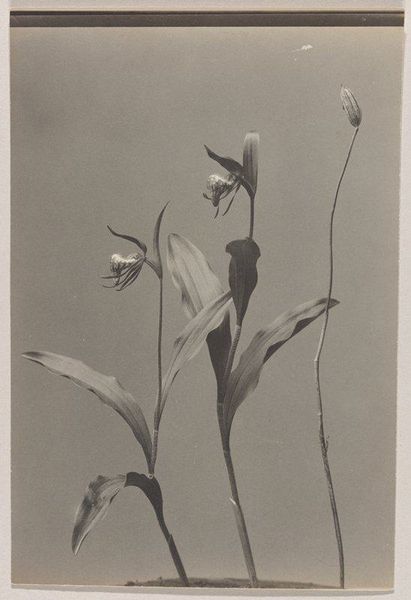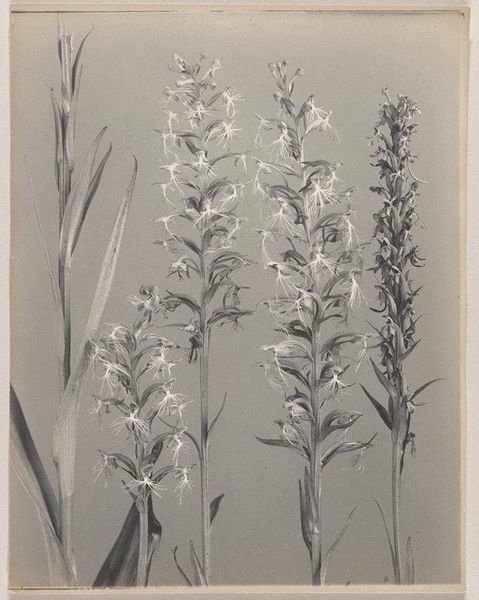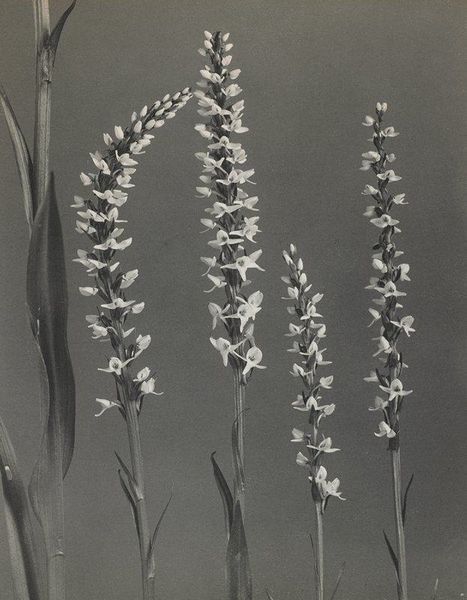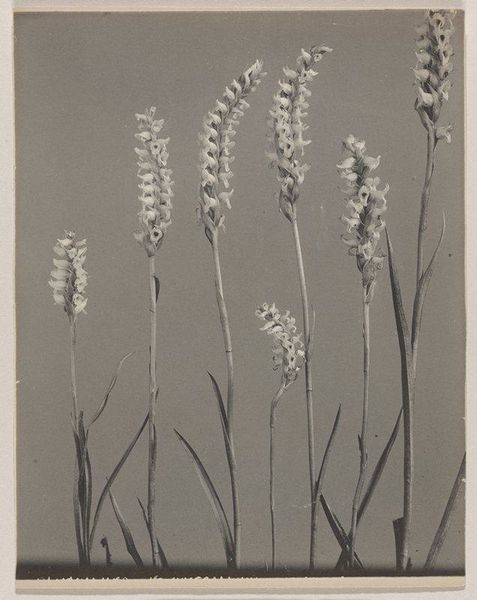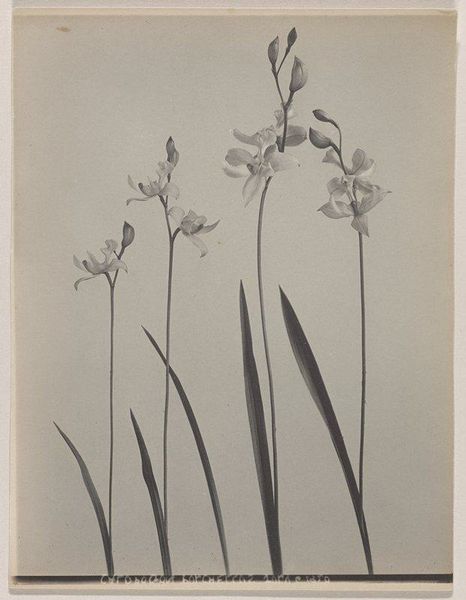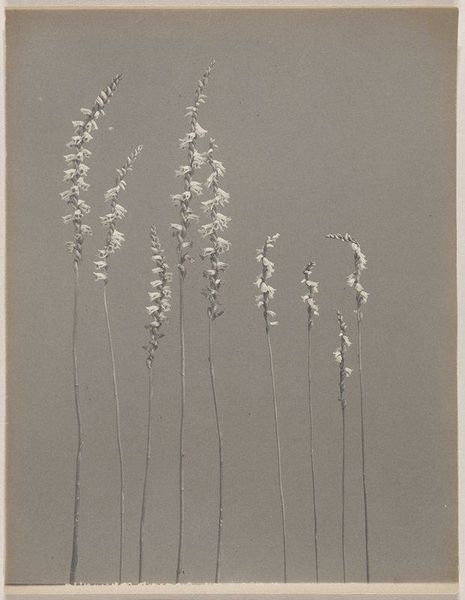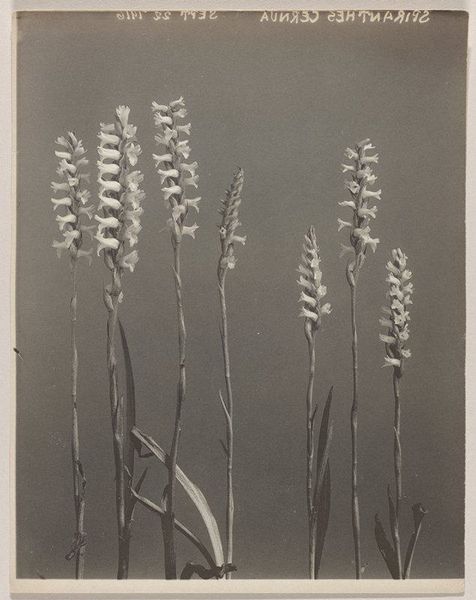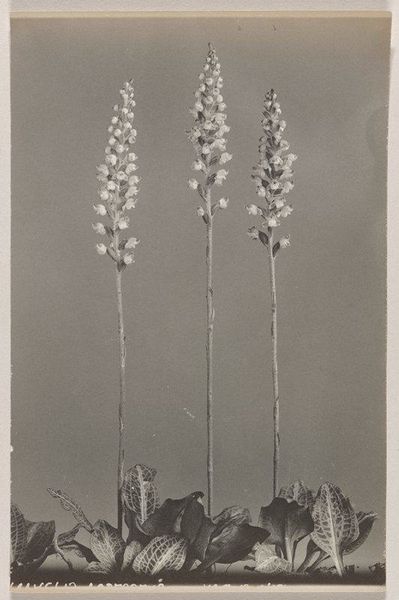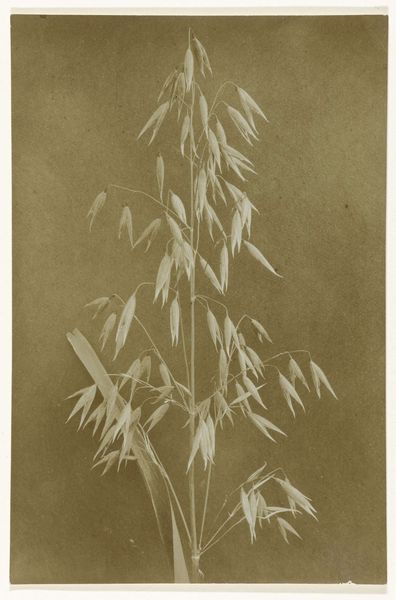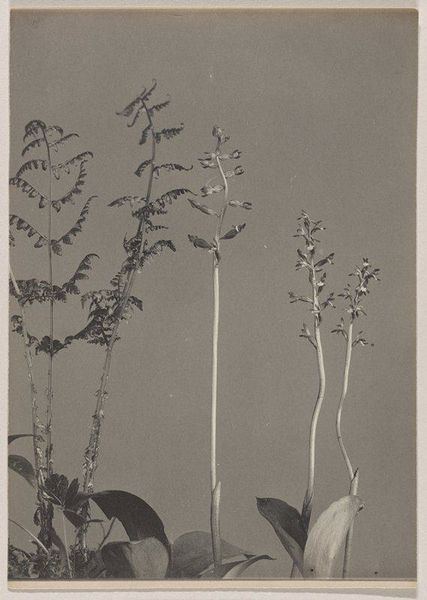
Spiranthes lucida- Wide-leaved Ladies' Tresses 1931
0:00
0:00
photography
#
still-life-photography
#
landscape
#
photography
#
realism
Dimensions: 9 3/4 x 6 3/4 in. (24.77 x 17.15 cm) (image)10 x 6 3/4 in. (25.4 x 17.15 cm) (sheet)
Copyright: No Copyright - United States
Curator: This platinum print by Edwin Hale Lincoln, dating to 1931, is entitled "Spiranthes lucida- Wide-leaved Ladies' Tresses". What are your initial impressions? Editor: Immediately, I’m struck by the materiality, its monochrome nature accentuating textures and form. The subdued tones emphasize the smooth leaves and the intricate structure of the floral spirals. Curator: That subdued palette directs attention to the symbolic dimensions. The "ladies' tresses" themselves have often been associated with feminine virtue and delicacy in the Victorian language of flowers. What continuity or divergence do you see between those older values and their modern-day role as an image of wild nature? Editor: Interesting point. While we're conditioned to admire flowers as icons of delicacy, the medium—photography using the platinum process—is significant here, adding heft, durability. The platinum printing process was often employed for its archival qualities. Lincoln’s careful crafting pushes against the instantaneous, revealing the labor-intensive nature of early photography and his own technical skill. Curator: I agree; it's not a casual snapshot. This echoes the older tradition of botanical illustration where exactitude also took precedence, suggesting not merely observation, but, I think, a kind of intimate understanding. The use of platinum, known for its stability, endows these delicate orchids with an almost monumental quality, an attempt, maybe, to preserve a vanishing natural world. Editor: That tension, that layering, seems right. Platinum wasn't cheap either—there’s a conscious decision to invest labor and high-end materials. Consider this as a cultural object as well as an artistic rendering. It embodies aspirations of preservation but also perhaps of class status and refinement. Curator: It speaks of values in that tension between scientific document and an appreciation, now perhaps tinted by nostalgia, for untouched wilderness. These orchids become, in a way, emblems of a vanishing America. Editor: Exactly, emblems crafted with deliberation using materials laden with meaning. It is, to me, the perfect case study that beautifully intertwines materials, processes, social status, and the delicate art of capturing flowers. Curator: Well, a wonderful dive into a captivatingly ambiguous work that now resides here at the Minneapolis Institute of Art. Thank you. Editor: Thank you. It's always about unearthing the hidden context of creation for me.
Comments
No comments
Be the first to comment and join the conversation on the ultimate creative platform.
